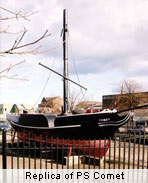Clan Wood People
William Wood (Williemus de Bosco)
Chancellor to King William the Lion in 1168, he is the first recorded Scot of the name. He is also mentioned in charters of King Alexander II relating to Inverness, 1214. (Note: his name was written as Williemus de Bosco – in the Roman Latin customarily used in records of the Scottish Court. In Norman Latin it would have been ‘de Vosco’, so assumptions that he was descended from a Norman knight may be misguided.
Admiral Sir Andrew Wood (1st Chief)
Born around the middle of the 15th century in Largo, Fife, Andrew Wood was the eldest son of William Wood, merchant, who was almost certainly a scion of the Woods who acquired Bonnytoun in Angus. They had a long history of owning lands throughout that district, Kincardineshire and elsewhere. Those areas still held around the time of James VI are shown in the map ‘Scotland of Old’, by Collins.
Andrew Wood, too, was a successful merchant, and owner of the frigate Flower. He became a master of fighting off Dutch, English and Portuguese pirates. His fame reached James III, who asked him to captain his ship, the Yellow Caravel. Sailing out of Leith, Andrew triumphed in many major skirmishes with privateers and squadrons sent by the English government, was made Admiral of Scotland and a feudal baron. He built a castle at his barony of Largo, a tower of which still stands. Sir Andrew Wood died probably in 1515. Enjoying the friendship of successive Stewart monarchs, his significance to Scottish history, and that of his descendants, is far greater than some people realise or can be gone into here.
Robert Wood (6th Chief)
Under Secretary of State for Scotland 1705-26 – during the traumatic years that included the 1707 Act of Union and the 1715 Uprising.
John Wood of Largo (7th Chief)
Governor of the Isle of Man 1761-77
Sir Gabriel Wood
Born 1767 at Gourock, he became Consul of Maryland (which then included Washington), and later Commissary-General of Accounts for the Caribbean, the Mediterranean and then of Canada – the most important army position abroad. He died in 1845. From one of his legacies, Sir Gabriel Wood’s Mariners’ Home was founded in Greenock five years after his death and is still serving the purpose for which it was intended.
 John Wood, 1788-1860
John Wood, 1788-1860
John and his brother, Charles (who had started shipbuilding in Quebec before returning to the Clyde and opening a yard in Dumbarton), took over their father’s Port Glasgow shipyards when John Snr. died in 1811. Under John’s management, Messrs. John Wood and Co. then built the epoch-making PS Comet, Europe’s first viable commercial steam vessel, for Henry Bell in 1812. The 28-ton paddle steamship was 45 feet long and 10 feet broad. John Wood was noted for building sailing ships which were greatly admired for fine workmanship and symmetry. They were fondly referred to as ‘Wood’s Yachts’.
Captain John Wood
Another descendant of the Admiral and born at Kilrenny, Anstruther, Fife in 1812, he is most famous for discovering the source of the River Oxus for the British Indian navy in 1837/8. For this signal achievement he was awarded the Royal Geographical Society’s prestigious Patron’s Medal, in 1841. The book, Wood’s Journey to the Oxus, was published in the same year.
Doctor Alexander Wood
Born in 1817, he was appointed to the Royal College of Physicians of Edinburgh. He is most remembered for developing and introducing the hypodermic syringe in 1853.
Rt Hon. Thomas McKinnon Wood
Secretary of State for Scotland 1912-16.





